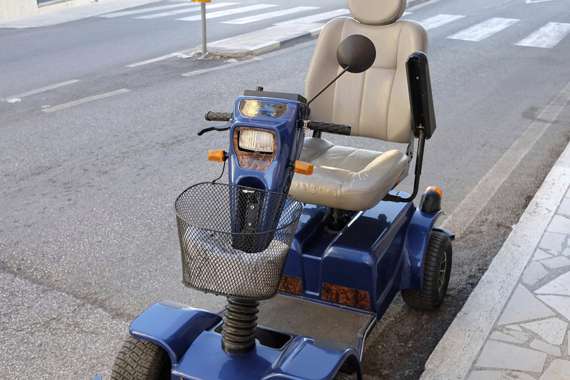World-First 3D Scanning Shows Best Approach for Mobility Aids
Description
People with disabilities rely on public transport, but those using powered mobility aids are often unable to access difficult vehicle layouts. This world-first research, sponsored by the Victorian Department of Transport and working with a range of transport and assistance organisations, used 3D scanning technology to model a range of mobility aids against a bus collision-detection algorithm and identified barriers for users.
Partners
Victorian Department of Transport (formerly Public Transport Victoria)
Impact
People using powered mobility aids, disability sector workers, and public transport planners now have a better understanding of the best models for public transport access and what design considerations should inform policy for future access. This information has been disseminated to a wide audience through Prof Unsworth's community engagement, and the world-first approach will enable further custom research, and user-facing solutions, in Australia and internationally.
Professor Carolyn A. Unsworth, Dr Julian Chua, Professor Anjum Naweed and Dr Prasad Gudimetla
Imagine waiting at the bus stop, not knowing if you can board the next bus – or even the one after that. Mobility aids should allow greater freedom for a growing sector of the Australian community, but public transport access is still a gamble for thousands of users with restricted mobility.
Public transport should be for all Australians, and national standards for the design of both mobility aids and transport vehicles are meant to ensure easy access.
So, when CQUniversity researcher and occupational therapist Professor Carolyn Unsworth found that most people still have difficulty getting their powered mobility aids on and off public transport, she was determined to make getting around easier for nearly a quarter of a million Australian users.
"There are hundreds of different models of powered mobility aids currently used in Australia, and similarly, there are hundreds of different bus layouts that they have to navigate," Prof Unsworth explains.
"It seemed incredible to me that consumers, vendors and the health care professionals involved in recommending mobility aids had no way of knowing which powered mobility aids are compatible with which public transport configurations."
In 2017, Prof Unsworth's pilot research project with 67 mobility aid users across Victoria and Queensland asked participants to outline their public transport experience and obstacles and barriers within vehicle layout.
"That project showed we needed more data across the range of models, but we needed a more efficient way to gather it than just riding buses all day!" she says.
The solution: Prof Unsworth's multi-disciplinary team of engineers, psychologists, and educators developed world-first 3D scanning technology to model mobility scooter movement through bus passageways.
The innovative approach saw 3D scanning and the use of open sourced graphics software, model 35 different mobility scooters exactly to specifications, then running them against a custom collision-detection algorithm using 21 bus scans.
Funded by Public Transport Victoria (now the Department of Transport), and with the support of Scooters Australia, CDC Bus, and Monash University's Immersive Visualisation Platform, the research method paves the way to better shape design, regulation and government policy in transport and health.
"This approach provides highly accurate yet custom information to people who want to access buses in their mobility aids, and it addresses a huge gap in knowledge for this growing sector of the community," says Prof Unsworth.
"It's also highlighted that existing standards for accessibility design are based on 2D floor areas and don't take into account the impact of raised impediments like electronic ticket scanners or rails and of the skill, weight and experience of the users."
As well as providing the findings to participants, Prof Unsworth then worked with a CQUni Master of IT student to develop a customer-facing mobile phone app using the results from the research.
"The app shows how easily consumers could choose a mobility aid that will fit most buses and get real-time updates on whether the approaching buses will accommodate them," she explains.
Since finalising the research, Prof Unsworth and her team made a submission to the 2018 inquiry: "Senate Standing Committees on Rural and Regional Affairs and Transport, Inquiry into the need for regulation of mobility scooters, also known as motorised wheelchairs."
She also presented in person, highlighting the need for systemic change to make community infrastructure more accessible for all Australia.
"The issue of community transport mobility is still affecting people across all age groups, and all people with a variety of disabilities need to access the community, but they aren't getting the right assessments or support to remain mobile," she says.
"Understanding the barriers – and that includes physical barriers – is a vital step to improving their access and experience across the board."
Prof Unsworth's research was published in the International Journal of Transport & Health and Disability and Rehabilitation: Assistive Technology and has been presented at a range of conferences and community events.
Connect with CQUniversity
At CQUniversity we know the value of our connections locally and around the world. Our partnerships help us create opportunities, deliver solutions and change lives. From time to time, we share our Connections Count update, where we share our highlights, including research impact stories like the ones below. Sign up to become one of our valued connections.

